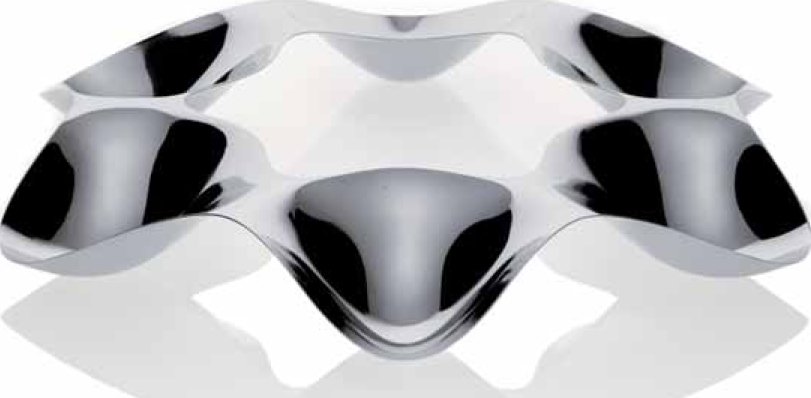When Apple introduced the first iPod, it was an audacious decision to use stainless steel for the back plate. Yes it’s beautiful, but it’s also a material that goes against expectations because it dents and scratches easily. However, the use of this ‘real’ material in place of plastic has changed the world’s expectations of materials in consumer electronics.
Well before Apple redefined the perceived applications of stainless steel, its introduction – under patents taken out in 1914 – provided the opportunity for a new language for products and in new product territories. This ‘non-rusting’ powerfully strong steel changed the world from its origins in Sheffield in the UK, which became a global hub for the material.
Stainless steel is steel alloyed with chromium, nickel and other elements. It owes its ‘stainless’ properties to the chromium, which creates an invisible, tenacious and self-healing chromium oxide film on its surface, a surface that can be enhanced further by molybdenum. Stainless steel is often referred to by the mix of chromium and nickel: 18/10, for example, refers to steel that is 18 per cent chromium and 10 per cent nickel, the ingredient that gives it a silvery sheen. 18/0 is much less expensive than 18/10 and most cutlery sold today is made from this material. 18/10 gives greater protection against corrosion and has a softer shine: most contemporary patterns are made from this top-grade stainless steel. 18/0 and 18/10 are both fully dishwasher-safe.
Image: Super Star TK03 bowl by Tom Kovac for Alessi

Key features
•Non-corrosive
•Excellent toughness
•Achieves a high polish
•Difficult to cold work due to hardness
•High temperature resistance
•High weight
•High cost
•Recyclable
Sources
According to the US Geological Survey in 2011, world steel consumption was expected to be 1,398 million tonnes. China is responsible for almost half of the world’s iron production, which in 2011 was 700,000,000 tonnes.
Cost
£3.20 ($5) per kg.
Sustainability issues
Recyclable.
Compared to other steels, stainless steel is fairly versatile in terms of processing – it can be folded, bent, forged, deep drawn and rolled. Standard grades are difficult to machine because of the hardness of the material, although specific grades are available that are much easier to machine. As a result of this versatility it is suited to production volumes ranging from one-off to mass production.
Typical applications
Stainless steel is generally used in environments where there is the risk of corrosion and heat resistance: its properties have been applied to kitchen equipment, tableware, architectural applications, engine components, fasteners, and tools and dies in production. In buildings, possibly one of the most striking applications are the gleaming panels at the top of the Chrysler Building in Manhattan. It is also able to remove smells from the skin and so is formed into handheld pebbles for cleaning the hands.
Derivatives
The four major types of stainless steel:
Austenitic is most widely used type of stainless steel. It has a nickel content of at least 7%, which gives it ductility, a large scale of service temperatures, non-magnetic properties and good weldability. The range of applications includes housewares, containers, industrial piping and vessels, building structures and architectural facades.
Ferritic stainless steel has properties similar to mild steel but with better corrosion resistance. The most common of these steels contain 12% and 17% chromium, with 12% chromium steel used mostly in structural applications and the 17% in housewares, boilers and washing machines.
Ferritic-austenitic stainless steel has both ferritic and austenitic lattice structures, hence its common name, duplex stainless steel. This steel has some nickel content for a partially austenitic lattice structure. The duplex structure delivers both strength and ductility. Duplex steels are mostly used in the petrochemical, paper, pulp and shipbuilding industries.
Martensitic stainless steel contains between 11 and 13% chromium and is both strong and hard with moderate corrosion resistance. This steel is mostly used in turbine blades and in knives.
| + | – |
|
–Versatile processing –Extremely tough –Finishes well –High temperature resistance –Recyclable |
–High cost –Difficult to cold work |
